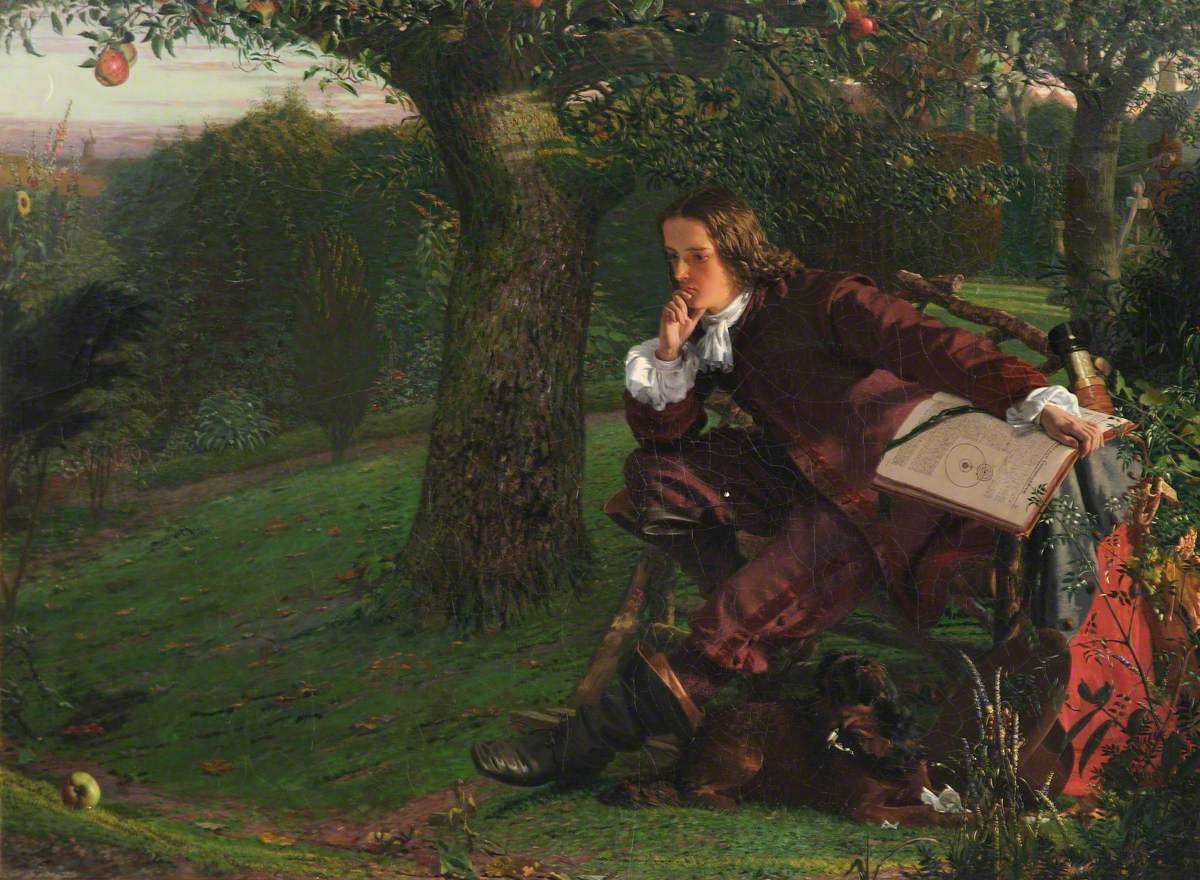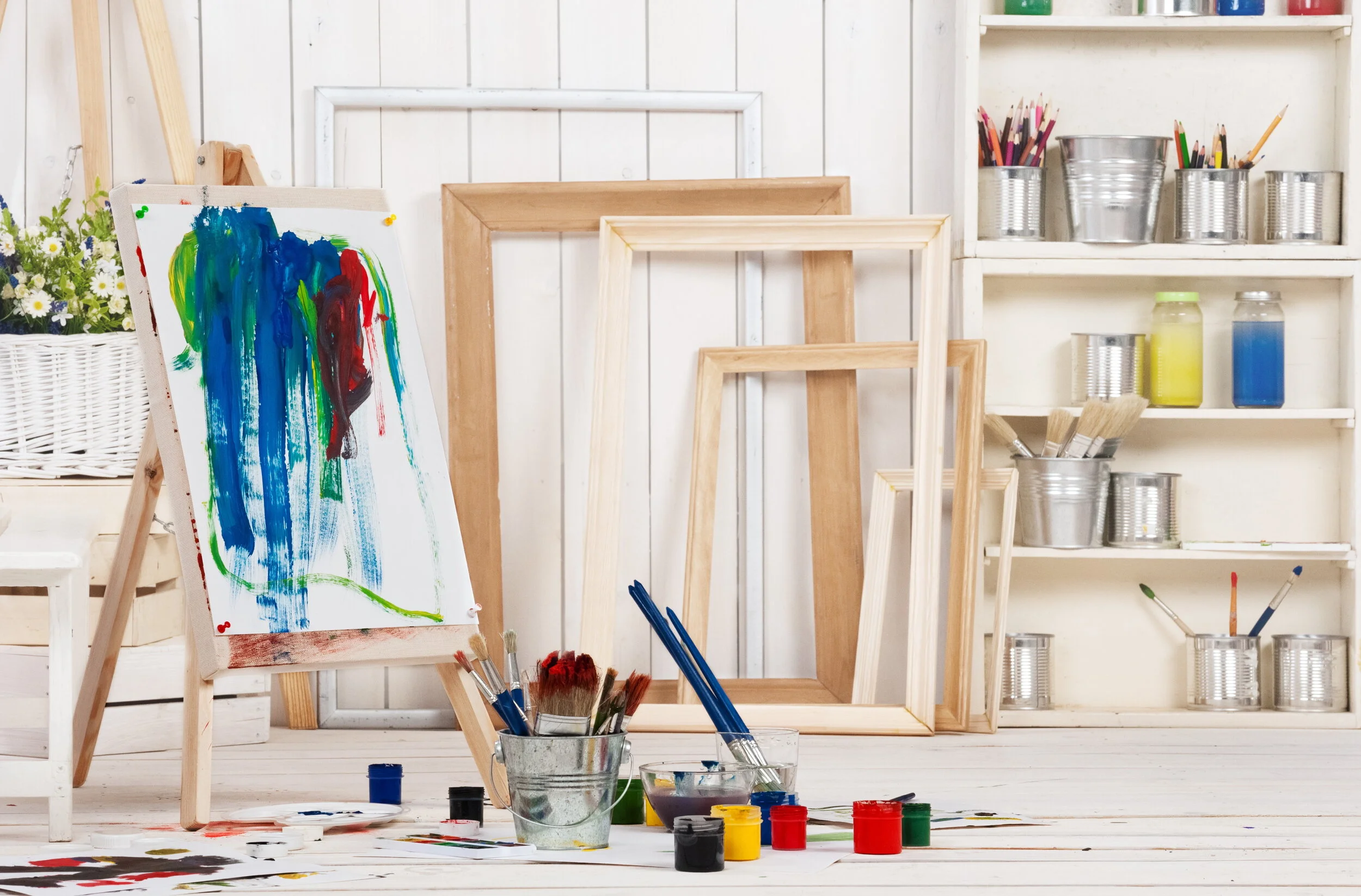Making Art a Family Project
If you want to make your homeschool a place that values creativity and creating, you can’t sit on the sidelines and wait for it to happen — you’ve got to get messy with them.
If you want to make your homeschool a place that values creativity and creating, you can’t sit on the sidelines and wait for it to happen — you’ve got to get messy with them.
In my early years of parenting, I’d set up crafty-type art activities for my first two children, and my creative interests would be pursued during the odd kid-free moment. Then I had a third child, who did not agree with the concept of kid-free moments. That’s when I shifted my approach and began setting up art explorations for all of us. This was purely a desperation move; I felt shrunken and depleted and needed to get my hands in paint and charcoal, even if only for a few moments in between assisting my children. I aimed for at least once a week. With three young children and homeschooling and life in general, it’s too easy to let non-necessities fall through the cracks. But art, for me, was a necessity, and I wanted it to be a regular part of my children’s experience, so I made it a priority.
We’re never going to fit everything in, and if we don’t consciously schedule those things we need and want to have happen, chances are, they will fall by the wayside as we fill our time with other things. We had a lovely art area at the time that I’d created when we had the chance to finish our basement, but nobody was using it. Just creating the space wasn’t enough; I needed to dedicate the time, too. For a long while, Sundays were art days. I carved out the time and treated it like any other commitment. Art wasn’t limited to just that time; once we made a habit of using the space together, we found ourselves there more and more. Before too long, the art area was being used as I’d hoped: my older kids were comfortable going in and out and finding what they needed, and my toddler soon asked for what she wanted with detailed specificity, often daily. They came up with ideas for explorations as often as I did, and we continue to make art together and separately.
The key, of course, is to form the habit of art making. This requires space, materials, and dedicated time. I often hear that the first and second items are difficult, but I suspect the real roadblock is number three. Decide when art time is going to be and write it on the calendar. Make it as high a priority as co-op or that class at the library or the play date at the park—all of which, I bet, get written on the calendar. Block out the time even if it doesn’t all get used up at first. It doesn’t even have to be a lot of time. It just has to be protected.
When I decided we needed to explore art, though, I had no idea where to begin. I realized most everything I’d done with children up to that point was properly classified as “crafts,” so I tried to educate myself. Susan Striker’s Young at Art book has been a fabulous resource, and is all you need if you have young children. For older children and adults, it all depends upon interest, but a challenge might be just the thing for kickstarting an art habit. Brainstorm a list of items to draw until you have a month’s worth, and then draw one per day. (You can also search the Internet for drawing challenge lists, or borrow 642 Things to Draw from the library. That will keep you busy for a while!) The “Lab” series of books is a wonderful resource for digging deeper into certain areas. We have Paint Lab, Drawing Lab, and Art Lab for Kids on our home bookshelf, but the series also includes books on color, collage, printmaking, and more. These are all good places to find ideas to jump start your art explorations.
I can’t stress enough that art in the home is, ideally, open to everyone, and by that I specifically mean adults. I don’t believe it’s fair for the kids to have all the fun. I’ve spoken to far too many parents who believed they just weren’t artistic. If you feel that way, I hope you sit down next to your child and play with the paints, too. Don’t set out to make anything in particular; give yourself permission to make a mess. See what the materials can do. See what you can do. One of the biggest gifts of homeschooling and parenting, in my opinion, is the way it lets us adults tap into the creative, curious enthusiasm of childhood. Join in at the art table. Have fun!
5 Art Projects to Do With Your Kids This Fall
Want a little more art in your life? You don’t have to be a great artist to inspire great art in your homeschool with these fun projects.
Want a little more art in your life? You don’t have to be a great artist to inspire great art in your homeschool with these fun projects.
1. Make alphabet art drawings.
Practice handwriting and hone creativity with this project inspired by Stuart Davis: Turn the alphabet into art by connecting letters and filling them in. Directions here >>
2. Paint a mixed media collage.
Use analogous colors to create a bold background, then craft a hot-air balloon from painted tissue paper. Spread this one out over a couple of days. Directions here >>
3. Create a camouflage lizard.
Grab a packet of scrapbook paper or old wallpaper samples, then try to paint, color, or craft a lizard that will blend into your chosen background. Directions here >>
4. Make coffee filter rainbows.
Use markers to draw patterns on coffee filters, then spray them thoroughly with water to make the colors run together. This would be a fun way to make tie-dye place cards for Thanksgiving. Directions here >>
5. Paint a month-long mural.
Divide a canvas into 30 rectangles, and stockpile blue, black, and white paint. Each day, mix a color that looks like that day's sky, and paint one square. At the end of the month, you’ll have an artistic record of your sky-gazing.
This was originally published in the fall 2019 issue of HSL.
3 Ways to Teach Art History
Art history is one of those extras that can wait indefinitely on your “as-soon-as-we-find-some-time” list. If you’re tired of waiting to dig into the world’s creative history, these curricula will help you make art history part of your regular routine now.
Art history is one of those extras that can wait indefinitely on your “as-soon-as-we-find-some-time” list. If you’re tired of waiting to dig into the world’s creative history, these curricula will help you make art history part of your regular routine now.
Art history is one of those extras that can wait indefinitely on your “as-soon-as-we-find-some-time” list. If you’re tired of waiting to dig into the world’s creative history, these curricula will help you make art history part of your regular routine now.
1. SHORT LESSONS IN ART HISTORY
Great for: Kids who like history but not necessarily making art
This is curriculum focuses on notable artists and schools of art from the Italian Renaissance through the mid-20th century, using biographies and major works as a jumping-off point for projects and discussions about art history. Though it’s recommended for middle through high school and does work well for those grades, it’s adaptable enough to use with younger kids or with a group of different ages.
2. KHAN ACADEMY: ART HISTORY
Great for: Visual learners who want to see lots of pictures
The standout feature of Khan Academy’s free online art history program is the sheer breadth of images it contains — while books are limited by their page space, Khan Academy is able to collect hundreds of pieces of art for each period it covers. (In fact, some of the recommended viewing list for AP Art History is only available through Khan Academy.) You could certainly use this with younger students, but it works best as a self-contained, self-directed study for students in middle school or older.
3. DISCOVERING GREAT ARTISTS FOR KIDS
Great for: Project-based learners who want activities and a focused approach
If you want to get your hands dirty with art projects, this is the program for you: For each of the featured artists, there’s an art project that mimics that artist’s style. (For instance, you’ll make a stained glass pattern when you study Louis Comfort Tiffany and a dot print when you explore Roy Lichtenstein’s work.) After a short artist biography and a little historical context, you’ll dive right into hands-on projects that let you try techniques and styles for yourself. Activities range from preschool-friendly to much more complex, but most are adaptable to work with students of any age.
(We’re Amazon affiliates, so if you purchase something through an Amazon link, we may receive a small percentage of the sale. Obviously this doesn’t influence what we recommend, and we link to places other than Amazon.)






































A Note About Affiliate Links on HSL: HSL earns most of our income through subscriptions. (Thanks, subscribers!) We are also Amazon affiliates, which means that if you click through a link on a book or movie recommendation and end up purchasing something, we may get a small percentage of the sale. (This doesn’t affect the price you pay.) We use this money to pay for photos and web hosting. We use these links only if they match up to something we’re recommending anyway — they don’t influence our coverage. You can learn more about how we use affiliate links here.